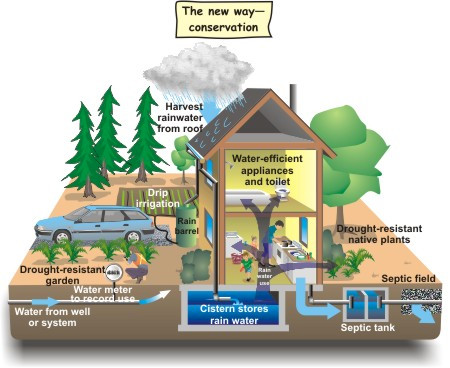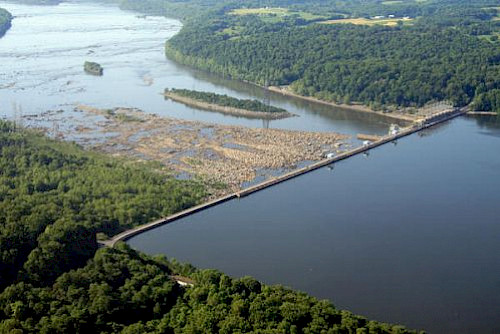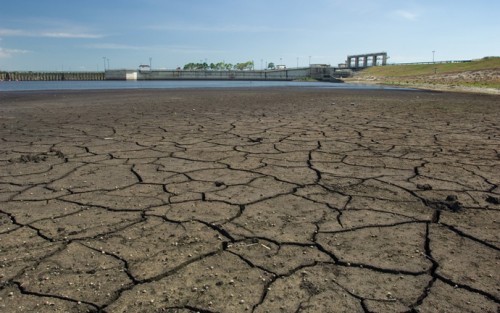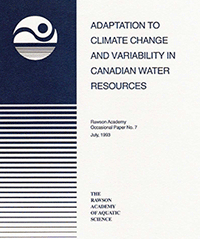Managing for Uncontrollable Environmental Change
Bill Nuttle ·Responding to environmental changes driven by forces outside of our control presents a challenge for the management of regional ecosystems. It is challenging enough for managers to understand the links between human activities within a region and their impacts on the regional ecosystem. It is even more challenging to establish monitoring programs, policies and regulations capable of regulating the direct effects of human activities on conditions in the ecosystem. Coping with changes driven by processes that cannot be controlled by actions taken within the region - changes such as climate change, rising sea level, earthquakes or a world-wide financial meltdown - add a new dimension of challenge for regional managers.
Human geographers who study natural disasters have developed a taxonomy of strategies available to societies to adapt to widespread, sometimes catastrophic change. Basically, there are only three options:
- alter behavior to avoid the impacts of change,
- take action to reduce the effects of change, or
- simply, accept the consequences.
The following is an excerpt from a report on Adaptation to Climate Change and Variability in Canadian Water Resources (PDF) that reviews options available to managers of water resources for adapting to global climate change.
A conceptual framework proposed by Kates (1985) to describe how societies cope with hazards of climate can be applied to understand what can be done in water management to adapt to climate change. Kates organizes adaptive measures into three categories based on the type of action taken in response to a hazard by society: change use, reduce loss, and accept loss. Adaptive measures are further categorized as either incidental or purposeful. Incidental adaptation to climate occurs when an action motivated by another purpose, for example in response to change in the demand for water, has the additional effect of reducing the potential impact of climate change on water systems. Purposeful adaptation refers to measures taken mainly to reduce the impacts of climate change.
Incidental Adaptation is a consequence of good water management. Even assuming that climatic and hydrologic processes are stationary (i.e. exhibit the same patterns of variability over time), errors of observation and interpretation introduce considerable uncertainty into what can be known about these processes. Managers account for this uncertainty by 1) designing for robustness, resilience and adjustability as well as reliability in water resource systems, 2) monitoring climate and hydrology and adjusting systems to maintain desired performance, and 3) maintaining “excess capacity” as a buffer against the unexpected. Robustness refers to the insensitivity of a system to errors and uncertainty in the information used in the design of the system. Resilience refers to both the ability of a system to operate under conditions different from those for which it was designed (Matalas and Fiering 1977), and the ability of a system to recover quickly from failure (Riebsame 1988). Adjustability refers to the ability of managers to change the system in response to evolving conditions at minimal cost. Riebsame (1988) describes how the normal practice of incrementally modifying the operating rules for a reservoir, as information accumulates from monitoring hydrologic processes, can also serve as adaptation to a changing climate. However, it may not be possible to deal with rapid change by incremental adjustments, and there are limits on the range of adjustability of a system. For example, changes in the operating rules can degrade the performance of a reservoir meant to serve multiple, possibly conflicting purposes, such as flood control versus water supply. Excess capacity refers to the ability of a system to perform beyond normal requirements, at least for short periods of time. Traditionally, excess capacity has been built into systems by constructing facilities larger than needed to provide a buffer against drought. One objective of water conservation programs, in which there is growing interest, is to maintain excess capacity in the face of growing demand without incurring the expense of constructing larger facilities.

Purposeful Adaptation to climate change can be broadly organized into; traditional management options (supply management) and non-traditional management options (demand management). These roughly correspond to two of Kates’ categories for societal response, reduce loss and change use. A third category of response includes measures that may require institutional changes to implement.
Measures that fall under the traditional approach to managing water (reduce loss) involve manipulating the natural hydrology in a basin through construction of reservoirs, enhanced groundwater recharge, or modifications to natural channels in order to maintain the reliability of water supplies and protection from flood or drought. Climate change effectively increases the uncertainty about future flows, storage and state of the water resource. The unpredictability of climate change is a barrier to responding by using traditional management measures, in part, because there is no way to quantify the benefit to society of undertaking the cost of constructing larger dams and levees required to maintain system reliability in the face of growing uncertainty. Also it is very difficult to justify changing priorities and reallocating resources within water management institutions to respond to specific scenarios of future climate given the uncertainties in climate prediction. As a result, many managers have the opinion that nothing should be done to respond to climate change until there is clear, compelling evidence, e.g. a catastrophic drought of flooding, that change has already begun.

Non-traditional options (change use) emphasize maintaining system reliability through increased flexibility by adjusting water use to match changes in hydrology. Rather than isolating water users from the effects of short-term climate variability, this approach seeks to minimize the impact of unexpected, potentially catastrophic events (Hollings 1978). Measures in this category include some innovative methods for demand-management that are currently under development in Canada (Tate 1990). These measures offer the best opportunities to improve adaptation to climate change in the short-term because many of them also address other problems that face water managers.
Some of the measures in the third category (accept loss) fall outside of the bounds of traditional water management and involve restructuring of society’s institutions other than those directly involved in water management. These measures implicitly accept that fact that climate change may mean more frequent failure of water resource systems. Failure is planned for rather that avoided. Measures attempt to minimize the effects of failure on society and/or share the consequences of failure broadly, for example through insurance programs.

References
Holling, C.S., 1978. Adaptive Environmental Assessment and Management. John Wiley and Sons, Chichester.
Kates , R.W., 1985. The interaction of climate and society. pp3-36 In: R.W. Kates, J.H. Ausubel, and M. Berberain (eds) Climate Impact Assessment. John Wiley and Sons, Chichester.
Matalas, N.C., and M.B. Fiering, 1977. Water resources systems planning. pp999-110 In: Climate Change and Water Supply, National Academy of Science, Washington, DC.
Riebsame, W.E., 1988. Adjusting water resources management to climate change. Climatic Change 13:69-97.
Tate, D.M., 1990. Water Demand Management in Canada: A State-of-the-Art Review. Social Science Series No. 23, Inland Waters Directorate, Environment Canada, 52 pp.


